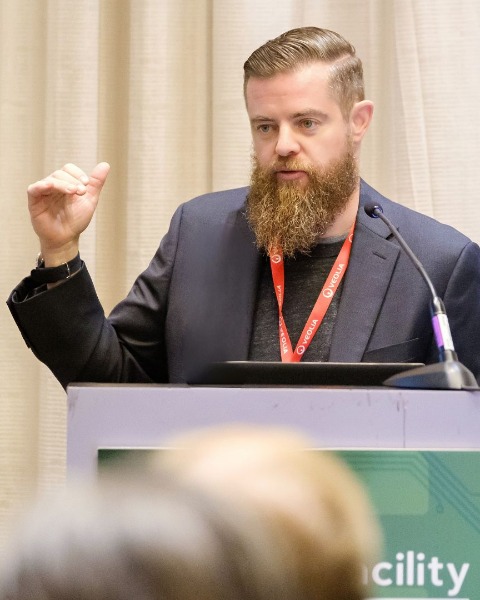Smart Manufacturing
Smart Manufacturing 4: Accelerating Sustainability with Smart Manufacturing
1st & 2nd Generation Dashboards for Optimizing & Predicting RO Performance
Wednesday, October 8, 2025
3:55pm - 4:20pm MT
Location: Smart Manufacturing Pavilion Theater, North Building, Lower Level, Expo Floor

Michael Boyd
Domain Leader
Veolia
Louisville, CO, United States
Speaker (SMfG)(s)
Reverse osmosis (RO) is responsible for the bulk desalination in the makeup portion of an Ultrapure Water (UPW) system. The core component of reverse osmosis systems is the spiral wound, thin film composite membrane elements installed in series into single or multi-stage pressure vessel arrays. The health of the membranes impacts the performance and operational efficiency of the system as measured by treatment capacity, water recovery rates, specific energy consumption, chemical consumption, clean-in-place (CIP) frequency and membrane life. The method to determine the optimal operating conditions starts with antiscalant modeling and membrane projections and then may be optimized further in the field based on actual performance data. The method to determine when to CIP membranes has traditionally been based on membrane manufacturer’s recommended operational guidelines; a decrease in normalized permeate flux by 10-15%, an increase in normalized differential pressure by 15% or an increase in normalized salt passage by 5-10%.
In today’s world of cloud computing and big data, we have the ability to take tens of thousands of lines of raw data that can be generated on a daily basis and input these values into normalization equations with user-defined boundary conditions. These trends are available to owners and operators as system level dashboards, providing visual indicators of multiple facets of RO system performance. Using those dashboards as a baseline, agent assisted anomaly detection using generative AI provides a mechanism to efficiently review all the raw and normalized data to identify any unusual patterns. Examples of anomalies include identifying a loss in performance of a pump, a motor running at a higher temperature or decibel value or instrumentation trending outside of typical ranges. The objective is to identify problems before they arise so we can proactively take corrective action as opposed to the characteristics of reactive behavior, which include mistakes and the potential for unsafe working conditions.
In addition to promoting proactive behavior, transparency and communication between operators and system owners, generalized additive models (GAMs) are utilized to forecast maintenance events, including when to CIP membranes, optimizing CIP effectiveness and when to replace membranes. Unlike the blanket guidelines for when to clean membranes provided by membrane manufacturers, using machine learning, we can more accurately predict when to clean based on-site specific inputs (cost of water/wastewater, cost of energy, cost of chemicals, cost of downtime, etc.) in order to ensure the lowest total cost of ownership. This presentation will review a case study, showcasing the dashboards and algorithms driving RO system performance.
In today’s world of cloud computing and big data, we have the ability to take tens of thousands of lines of raw data that can be generated on a daily basis and input these values into normalization equations with user-defined boundary conditions. These trends are available to owners and operators as system level dashboards, providing visual indicators of multiple facets of RO system performance. Using those dashboards as a baseline, agent assisted anomaly detection using generative AI provides a mechanism to efficiently review all the raw and normalized data to identify any unusual patterns. Examples of anomalies include identifying a loss in performance of a pump, a motor running at a higher temperature or decibel value or instrumentation trending outside of typical ranges. The objective is to identify problems before they arise so we can proactively take corrective action as opposed to the characteristics of reactive behavior, which include mistakes and the potential for unsafe working conditions.
In addition to promoting proactive behavior, transparency and communication between operators and system owners, generalized additive models (GAMs) are utilized to forecast maintenance events, including when to CIP membranes, optimizing CIP effectiveness and when to replace membranes. Unlike the blanket guidelines for when to clean membranes provided by membrane manufacturers, using machine learning, we can more accurately predict when to clean based on-site specific inputs (cost of water/wastewater, cost of energy, cost of chemicals, cost of downtime, etc.) in order to ensure the lowest total cost of ownership. This presentation will review a case study, showcasing the dashboards and algorithms driving RO system performance.
